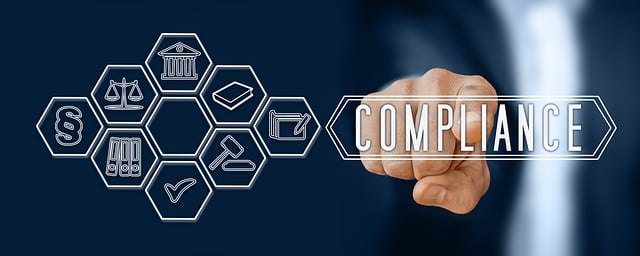Contempt proceedings, a critical legal tool for enforcing court orders and protecting client rights, distinguish between civil and criminal actions. Understanding these differences is key to developing effective contempt legal strategies. By identifying potential contempt through monitoring client conduct and reviewing documents, lawyers can proactively plan defenses based on compelling evidence, case law, and negotiation. Successful strategies involve structured legal documentation, staying informed about contempt legal strategies and relevant laws, and maintaining open communication with all parties for positive outcomes in complex cases.
In the intricate landscape of legal disputes, defending client rights in contempt proceedings is a delicate yet pivotal task. This comprehensive guide delves into the intricacies of contempt lawsuits, exploring crucial aspects like understanding different types, recognizing potential violations, and employing effective legal strategies. By examining these elements, professionals can ensure robust client protections, navigating the process with expertise and communication mastery. Unraveling these complexities reveals powerful tools to defend rights in the face of contempt charges.
- Understanding Contempt Proceedings: Definition and Types
- Client Rights: Essential Protections in Legal Disputes
- Identifying Potential Contempt: Signs and Triggers
- Legal Strategies for Defending Client Rights
- Effective Communication: Navigating the Contempt Process
Understanding Contempt Proceedings: Definition and Types

Contempt proceedings are a legal mechanism used to enforce court orders and protect client rights. It refers to the willful failure to comply with a court order, such as failing to pay alimony or child support, not following a restraining order, or refusing to provide evidence in a legal case. These proceedings can take various forms, including civil and criminal contempt.
In civil contempt, individuals are held responsible for their actions that obstruct justice, like ignoring a subpoena. Criminal contempt, on the other hand, involves actions that interfere with court proceedings and can result in fines or imprisonment. Understanding these types of contempt is crucial for developing effective legal strategies to defend client rights during such proceedings.
Client Rights: Essential Protections in Legal Disputes

In legal disputes, client rights are paramount as they ensure fairness and justice throughout the proceedings. These rights serve as essential protections, guaranteeing individuals can assert their positions effectively. When facing contempt charges, understanding and safeguarding these rights become even more critical. Knowledgeable clients armed with an awareness of their legal entitlements can navigate the complexities of contempt legal strategies with confidence.
Comprehending one’s client rights empowers individuals to actively participate in their cases. It allows them to challenge any unfair treatment or procedural irregularities. By exercising these rights, clients can ensure their voices are heard and that the legal process remains robust and transparent. In the context of contempt proceedings, this understanding becomes a powerful tool for mounting a defense and achieving favorable outcomes.
Identifying Potential Contempt: Signs and Triggers

Identifying potential contempt is a crucial step in defending client rights during legal proceedings. Signs and triggers can include repeated failures to comply with court orders, willful disregard for deadlines, or intentional non-disclosure of pertinent information. These actions often manifest as pattern behavior, where an individual or entity consistently ignores established rules and protocols, indicating a possible intent to obstruct justice.
Contempt legal strategies should be employed proactively. Lawyers must be vigilant in monitoring client conduct, reviewing court documents, and staying informed about relevant laws. By recognizing these signs early, legal professionals can develop strategic plans to address the issue, ensuring fair treatment for their clients while upholding the integrity of the judicial system.
Legal Strategies for Defending Client Rights

When facing contempt proceedings, a robust legal strategy is paramount to defending client rights. One effective approach involves challenging the validity of the alleged contemptuous actions by presenting compelling evidence and legal arguments. This may include demonstrating that there was no intent to disobey a court order or showing that the actions were not within the scope of the original mandate. Additionally, leveraging case law and previous judgments can strengthen the defense, providing a solid foundation for arguing against the accusations.
Another crucial strategy is negotiating and reaching out to the opposing party or their counsel. This proactive approach may lead to resolving the issue without escalating to formal proceedings. Moreover, crafting well-structured legal documents, such as motions and briefs, that clearly articulate the client’s position and cite relevant statutes or legal precedents, can significantly influence the outcome. Legal professionals should also stay updated on changes in contempt laws and regulations to adapt their strategies accordingly.
Effective Communication: Navigating the Contempt Process

Effective communication is a key aspect of navigating the complexities of contempt proceedings. When defending client rights, clear and strategic messaging is essential. Legal professionals must ensure that all parties involved understand the nature of the allegations, the potential consequences, and the available legal strategies. Well-crafted correspondence, whether in writing or during meetings, can significantly influence the outcome of the case.
Contempt legal strategies often rely on meticulous documentation, thorough research, and persuasive argumentation. Lawyers should communicate these strategies in a manner that respects both the client’s rights and the court’s authority. By maintaining open lines of communication, addressing concerns promptly, and providing transparent updates, legal teams can build trust with clients while navigating the rigors of contempt proceedings effectively.






